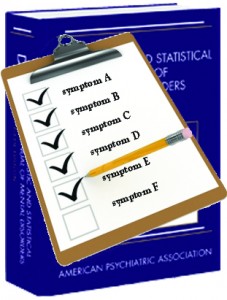 Translating Accurate Diagnosis into Effective Treatment, Part Two
Translating Accurate Diagnosis into Effective Treatment, Part Two
Within the frame of the current DSM, a number of issues relevant to substance abuse disorders may have been overlooked.
Our own experience of recovery, coupled with our research over several years, has made us curious as to why the way addicts and alcoholics themselves talk about their condition (“an emotional disease,” “a parasite the feeds on our emotions”, “an emotional cancer,” “a fear based disease”) is rarely considered in theories of addiction.
We doubt that addicts are wrong in these descriptions of their disease. In fact, we have taken the opposite approach, and started to examine research for clues as to whether addiction and alcoholism have their roots in emotional dysregulation and emotional processing deficits.
The processing deficits associated with emotional dysregulation shape decision making challenges, distress-based impulsivity, and lack of inhibition across various psychological domains, such as executive dysfunction. Emotional dysregulation also heightens reward sensitivity. This combination may be a potent risk factor for the development and persistence of addictive disorders1.
We suggest emotional dysregulation can account for the majority of symptoms seen in addicts and alcoholics. For us, any definition or diagnosis needs to aim for this type of universality and systemic consistency to be valid.
It needs to explain a disorder across various strata, from neurobiological mechanisms to manifest behavior. It needs to satisfactorily explain observable symptoms of a disorder in its sufferers. It needs to have the validity sought above. It needs to move beyond “atheoretical” and be driven by experimental research that has sound conceptual rationale—based not on “consensus about clusters of clinical symptoms” but on objective laboratory measurement.
Let’s experimentally test these theoretical accounts.
There is a growing body of evidence that demonstrates altered morphology, functionality and connectivity of brain regions and the neural networks related to emotional regulation. This certainly suggests inherent impairments in processing and regulating emotion. Such impairments would have effects on impulsivity and decision making deficits, as well as difficulties in regulation of stress and behavior.
The “atheoretical” DSM previously used a working group to consider what constituted “craving”2 and forwarded an essentially neurobiological account based on reinforcement models (not particularly “atheoretical.”) These “conditioning” accounts of craving have been challenged, with some researchers suggesting emotional dysregulation also provides a comprehensive “cognitive” account of craving.3
We firmly believe that viewing addiction as the consequence of emotional dysregulation opens up the possibility of more co-operative therapeutic exchange in relation to addiction. All major treatments and recovery supports, from 12 step groups to ACT or DBT, can easily be framed or reframed to view addiction and alcoholism as disorders of emotional regulation.
This would facilitate a move towards universality of treatment, too. Even CBT’s cognitive distortions can be viewed as the consequence of emotional dysregulation, such as catastrophizing.
Prevention can also benefit from considering emotional dysregulation. Many emotional regulation difficulties serve as vulnerabilities or risk factors for later addiction, especially in children of alcoholics. Measuring biomarkers, such as heart rate variability (a putative index of emotional dysregulation,) can aid us in highlighting these. We can intervene to help reinforce emotional regulation strategies, and tackle this disease at source.
To help those at risk and those currently suffering from addiction we first have to accurately define the disorder and accurately diagnose difficulties; only then can be hope to be more effective in treating this most profound of mental disorders.
References:
1. Aldao, A., Nolen-Hoeksema, S., & Schweizer, S. (2010). Emotion-regulation strategies across psychopathology: A meta-analytic review. Clinical psychology review, 30(2), 217-237.
2. Agrawal, A., Heath, A. C., & Lynskey, M. T. (2011). DSM‐IV to DSM‐5: the impact of proposed revisions on diagnosis of alcohol use disorders. Addiction,106(11), 1935-1943.
3. Murphy, A., Taylor, E., & Elliott, R. (2012). The detrimental effects of emotional process dysregulation on decision-making in substance dependence. Frontiers in integrative neuroscience, 6.
The author notes: “We write under the pseudonym Paul Henry as we are recovering persons who are also PhDs and academics and wish to remain anonymous for now. We discuss how accurately research describes alcoholics in recovery, models relapse, aids effective treatment, or allows families/loved ones to comprehend this neurobiological disease and why alcoholics are the way they are.” Paul Henry’s blogs include Inside the Alcoholic Brain, and The Alcoholic’s Guide to Alcoholism. You can find them on Twitter as Drunken Neuron.
Please Comment Below
Translating Accurate Diagnosis into Effective Treatment -More from this series:
- A Better Diagnostic Understanding of Addiction
- Diagnosis: Towards Validity and Consistency

 — June 28, 2014 @
— June 28, 2014 @ 






